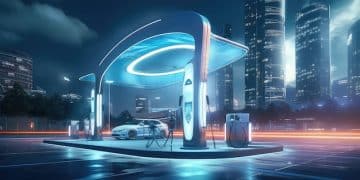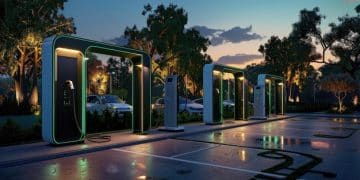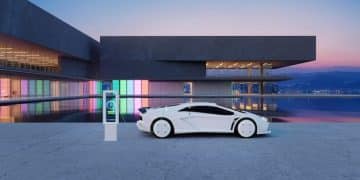Is the Internal Combustion Engine Dead? Experts Weigh In
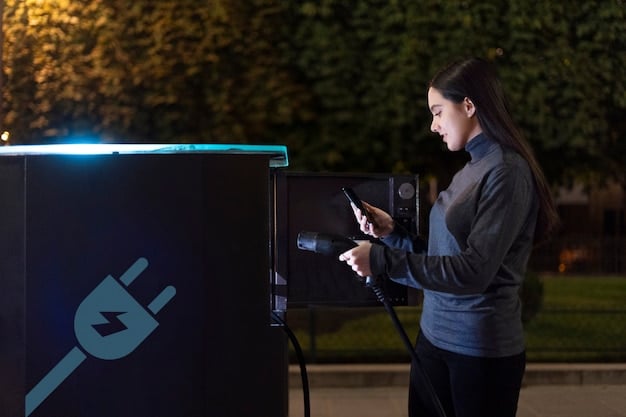
The future of the automotive industry is at a crossroads, with experts debating whether the internal combustion engine (ICE) will be replaced by electric vehicles (EVs) and other alternative power sources.
The automotive world is undergoing a seismic shift. The question on everyone’s mind: is the internal combustion engine dead? Experts weigh in on the future of automotive power, and the answers are more complex than you might think.
The Shifting Landscape of Automotive Power
The automotive industry is in a state of flux, driven by technological advancements, environmental concerns, and shifting consumer preferences. The rise of electric vehicles (EVs) has led many to question the long-term viability of the internal combustion engine (ICE).
But is it truly the end of the road for the ICE? Experts offer varying perspectives, considering factors ranging from infrastructure limitations to the emotional connection drivers have with traditional engines.
The Rise of Electric Vehicles
Electric vehicles have emerged as a frontrunner in the race to replace the ICE. With advancements in battery technology and increasing charging infrastructure, EVs are becoming more practical and appealing to a wider audience.
However, challenges remain, including the high cost of batteries, limited range, and the time required for charging. Despite these hurdles, the momentum behind EVs is undeniable.
- Government incentives and regulations are accelerating EV adoption.
- Major automakers are investing billions in EV development and production.
- Consumers are increasingly aware of the environmental benefits of EVs.
The transition to electric vehicles is not a simple one, with both pros and cons needing careful consideration.
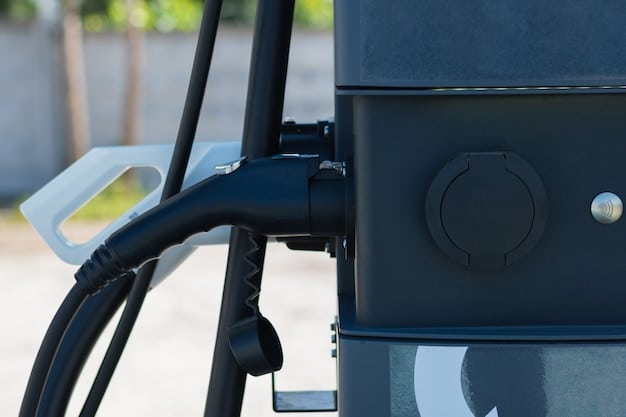
The Internal Combustion Engine’s Defense
While electric vehicles are gaining traction, the internal combustion engine is not going down without a fight. Advancements in engine technology are making ICE vehicles more efficient and environmentally friendly.
Moreover, the existing infrastructure and the emotional connection drivers have with traditional engines provide a strong foundation for the continued use of ICE vehicles. The debate is far from over.
Efficiency Improvements in ICE Technology
Automakers are continuously innovating to improve the efficiency of internal combustion engines. Technologies such as turbocharging, direct injection, and variable valve timing are helping to reduce fuel consumption and emissions.
These advancements are making ICE vehicles more competitive with EVs in terms of environmental impact, at least in the short term. The focus is on making the most of existing technology.
- Turbocharging increases engine power and efficiency.
- Direct injection delivers fuel directly into the combustion chamber, improving fuel economy.
- Variable valve timing optimizes engine performance at different speeds.
These improvements collectively extend the lifespan of the ICE, buying time for further innovations.
Alternative Fuels: A Bridge to the Future?
Alternative fuels such as biofuels, hydrogen, and synthetic fuels are being explored as potential replacements for gasoline and diesel. These fuels offer the promise of reducing emissions and dependence on fossil fuels.
While still in the early stages of development, alternative fuels could play a significant role in the future of automotive power, either as a bridge to full electrification or as a viable long-term option.
Biofuels: Renewable Energy from Organic Sources
Biofuels are derived from biomass, such as crops, algae, and waste materials. They offer a renewable alternative to gasoline and diesel, reducing greenhouse gas emissions and supporting sustainable agriculture.
However, concerns remain about the land use and environmental impact of biofuel production. The challenge is to produce biofuels sustainably and efficiently.

Hydrogen: The Fuel of the Future?
Hydrogen fuel cells combine hydrogen and oxygen to produce electricity, with water as the only byproduct. Hydrogen vehicles offer zero tailpipe emissions and can be refueled quickly.
However, the production, storage, and distribution of hydrogen remain significant challenges. The cost of hydrogen fuel cells is also a barrier to widespread adoption.
Alternative fuels offer a potential pathway to a more sustainable automotive industry, but significant challenges remain.
Expert Opinions: Weighing the Evidence
Experts in the automotive industry hold diverse views on the future of automotive power. Some believe that electric vehicles are the inevitable future, while others argue that internal combustion engines will continue to play a significant role for decades to come.
Understanding these different perspectives is crucial for navigating the complex landscape of automotive technology and making informed decisions about the future of transportation.
The Electric Vehicle Advocates
Advocates of electric vehicles argue that they offer significant environmental and performance advantages over internal combustion engines. They point to the decreasing cost of batteries, the increasing availability of charging infrastructure, and the growing consumer demand for EVs as evidence that the future is electric.
These experts believe that government regulations and incentives will further accelerate the adoption of EVs, making them the dominant form of automotive power in the coming years.
The Internal Combustion Engine Supporters
Supporters of internal combustion engines argue that they offer advantages in terms of cost, range, and refueling time. They also point to the existing infrastructure and the emotional connection drivers have with traditional engines as reasons why ICE vehicles will remain relevant.
These experts believe that advancements in engine efficiency and the development of alternative fuels will allow ICE vehicles to continue to compete with EVs for the foreseeable future.
Expert opinions vary widely, reflecting the uncertainty and complexity of the automotive industry’s future.
Infrastructure Challenges and Opportunities
The transition to alternative automotive power sources, whether electric vehicles or alternative fuels, requires significant investment in infrastructure. Charging stations, hydrogen refueling stations, and biofuel production facilities are all essential components of a sustainable transportation system.
Overcoming these infrastructure challenges is crucial for realizing the full potential of alternative automotive power sources and ensuring a smooth transition away from traditional gasoline and diesel vehicles.
Building a Robust Charging Network
The availability of charging stations is a key factor in the adoption of electric vehicles. A robust charging network must be convenient, reliable, and accessible to EV drivers in both urban and rural areas.
Governments, automakers, and private companies are all investing in the development of charging infrastructure, but much more work needs to be done to meet the growing demand for EV charging.
- Public charging stations are essential for long-distance travel.
- Home charging is convenient for daily commuting.
- Workplace charging can encourage EV adoption among employees.
Expanding the charging network is a critical step in the transition to electric mobility.
Consumer Adoption and Market Trends
Ultimately, the success of any automotive power source depends on consumer adoption. Factors such as cost, performance, range, and refueling time all influence consumer decisions.
Understanding consumer preferences and market trends is essential for automakers and policymakers in shaping the future of automotive power and ensuring a sustainable transportation system.
The Impact of Government Incentives
Government incentives, such as tax credits and rebates, can play a significant role in encouraging consumers to purchase electric vehicles or other alternative fuel vehicles. These incentives can help to offset the higher upfront cost of these vehicles, making them more accessible to a wider range of buyers.
However, the effectiveness of government incentives depends on their design and implementation. Incentives must be targeted, transparent, and sustainable to achieve their desired impact.
Consumer adoption and market trends will ultimately determine the fate of the internal combustion engine.
| Key Point | Brief Description |
|---|---|
| ⚡ EVs Rising | Electric vehicles are gaining popularity due to environmental benefits and technological advancements. |
| ⛽ ICE Defense | Internal Combustion Engines are improving efficiency, remaining relevant for now. |
| 🌱 Alt. Fuels | Biofuels & hydrogen are explored, offering pathways to sustainability. |
| 💰 Incentives | Incentives play a key role in boosting sales. |
FAQ
▼
Yes, EVs generally produce fewer emissions over their lifespan, especially when powered by renewable energy sources. However, the manufacturing process still has an environmental footprint.
▼
Many experts suggest ICE vehicles will continue to be produced for at least another decade, particularly in regions with limited EV infrastructure.
▼
The main challenges include the high cost of fuel cells, the lack of hydrogen refueling infrastructure, and the energy-intensive process of producing hydrogen.
▼
Biofuels can be sustainable if produced from non-food crops or waste materials. However, large-scale biofuel production can compete with food production and lead to deforestation.
▼
Government policies, such as emissions standards, tax incentives, and investments in infrastructure, can significantly accelerate the transition to alternative automotive power sources.
Conclusion
The debate over the future of automotive power is far from settled. While electric vehicles are gaining momentum, internal combustion engines continue to evolve and alternative fuels offer potential pathways to sustainability. The ultimate outcome will depend on technological advancements, government policies, consumer preferences, and the ability to overcome infrastructure challenges. Only time will tell which technology will ultimately dominate the automotive landscape.
